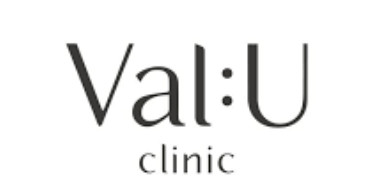Fine Lines in Korea, Seoul
myeongdong Val:u Clinic
Val:U Clinic Myeongdong, Seoul | Global Experts in Fine Lines Treatment
Fine Lines Treatments in Korea: Your Comprehensive Guide
Korea is renowned for its advanced anti-aging and skincare technologies, offering a wide array of solutions for fine lines. These early signs of aging, which often appear around the eyes, mouth, and forehead, can be effectively treated to restore a youthful and radiant complexion. Korean clinics utilize a combination of cutting-edge lasers, injectables, and regenerative therapies to provide natural-looking results with minimal downtime.
What are Fine Lines?
Fine lines are shallow creases that form on the skin's surface, often as a result of a combination of factors. The primary causes include a natural decline in collagen and elastin, sun damage (UV exposure), repeated facial expressions, and dehydration. As the skin loses its elasticity and ability to bounce back, these small creases become more noticeable, particularly around delicate areas of the face.
Popular Types of Fine Lines Treatments in Korea
- Botox: This is the gold standard for treating dynamic fine lines caused by muscle movements, such as crow's feet, frown lines, and forehead wrinkles. Botox works by temporarily relaxing the facial muscles, smoothing out the lines.
- Dermal Fillers: For deeper fine lines and wrinkles caused by volume loss (static lines), hyaluronic acid fillers are used to plump and hydrate the skin from within. They are commonly used to treat lines around the mouth and cheeks.
- Skin Boosters: Treatments like Rejuran and Juvelook involve injecting a solution of polynucleotides or poly-L-lactic acid (PLLA) to stimulate collagen and improve skin hydration and elasticity.
- Laser Treatments:
- Pico Laser: This laser is effective for improving skin texture, stimulating collagen, and reducing the appearance of fine lines with minimal heat.
- Fractional Laser: Lasers like Fraxel and CO2 resurface the skin by creating microscopic channels, which triggers the body's natural healing process and promotes significant collagen production.
- RF Microneedling: This combines microneedling with radiofrequency energy to deliver heat deep into the dermis. Devices like Potenza and Sylfirm X are highly effective for tightening the skin and smoothing out fine lines.
Why Choose Korea for Fine Lines Treatments?
Expert Practitioners
Korean dermatologists and aesthetic doctors are highly specialized in anti-aging treatments and can create a personalized, multi-layered treatment plan.
Advanced Technology
Clinics in Korea are equipped with the latest, state-of-the-art devices and premium products, ensuring safe and effective results.
Holistic Approach
Practitioners often combine different treatments—such as Botox for dynamic lines and lasers for texture—to achieve a more comprehensive and natural-looking rejuvenation.
Competitive Pricing
You can access a wide range of advanced treatments at a more affordable price than in many other countries.
Typical Cost of Fine Lines Treatments in Korea
- Botox (per area): ₩50,000–₩150,000.
- Skin Boosters: ₩200,000–₩500,000 per session.
- Laser Treatments: ₩200,000–₩700,000 per session.
Treatment Process Overview
- Consultation: A dermatologist assesses your skin and recommends a tailored treatment plan.
- Procedure: Treatments are generally quick, often taking less than an hour. A topical numbing cream is used to ensure comfort.
- Aftercare: Downtime varies depending on the treatment, from immediate for injectables to a few days of redness and peeling for lasers.
Aftercare Tips
- Wear broad-spectrum sunscreen with high SPF to protect your skin, especially after laser treatments.
- Keep your skin well-hydrated with a gentle moisturizer to support healing.
- For a few days after treatments, avoid harsh exfoliants, retinoids, or strong active ingredients.
- Adhere to all specific post-treatment instructions provided by your dermatologist.
Multilingual Clinics
Many Korean clinics offer English, Chinese, and Japanese-speaking staff to provide seamless communication and comfort for international patients.

